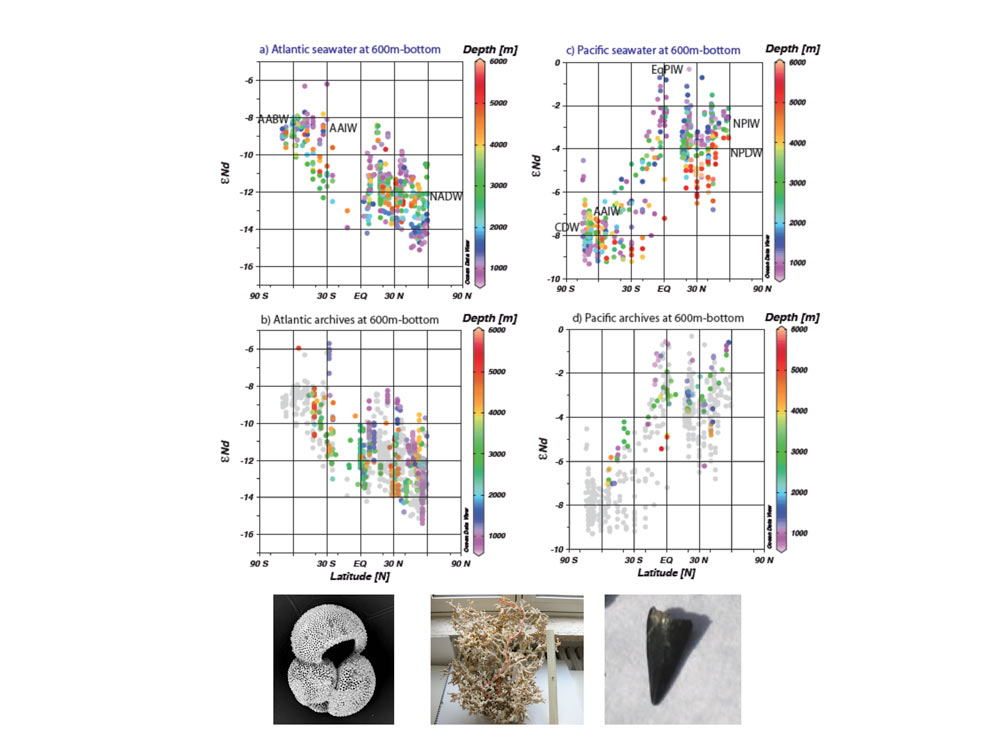Disentangling the paleo signals brought by neodymium isotopic composition
Which paleo information are traced by the imprint neodymium isotopic signatures (εNd) in the different archives: paleo circulation or paleo erosion? The scientific debate on this issue is opened for years now. Tachikawa and co-workers (2017, see reference below) are proposing an important step forward with a thorough review of the fate of εNd in the modern ocean combined with other tracers as hydrography parameters (temperature, salinity, nutrients, oxygen), but also dissolved carbon-14 (14C) and δ13C. In addition, they compiled archive εNd data for leachates, foraminiferal tests (left picture), deep-sea corals (middle picture) and fish teeth/debris (right picture) from the Holocene.
Analytical treatment of these important updated databases allows these authors to draw the following general schemes:
- At water depths ≥1500 m, large-scale water mass mixing is a primary control of deep water εNd distribution.
- At ≥200 m, basin-scale seawater temperature-salinity-εNd diagrams demonstrate the isotopic evolution of different water masses.
- At 600–1500 m water depths, the relationships are weaker. Basin-scale seawater vertical εNd profiles demonstrate larger variability.
- At surface and subsurface depths, suggesting local/regional detrital influence at shallower water depths.
- Empirical equations were established to predict the main, largescale, deepwater εNd trends from hydrography parameters revealing that continental influence on seawater and archive εNd is observed mainly within 1000 km from the continents.
- Seawater and archive εNd values present clear latitudinal trends in the Atlantic and Pacific Oceans at water depths ≥600 m: this reinforces the potentiality of Nd isotopes to distinguish between northern/southern sourced water contributions at intermediate and deep water depths in the present and past ocean.

Figure: Major latitudinal trends of seawater (a and c) and archive (b and d, and pictures blow) εNd values in the Atlantic and Atlantic sector of the Southern Ocean (a and b) and Pacific and Pacific sector of the Southern Ocean (c and d) at ≥ 600 m. Major water masses are indicated. The grey dots on archive figures show seawater values. All the figures are created using ODV (Schlitzer, 2015). Click here to view the figure larger.
Reference:
Tachikawa, K., Arsouze, T., Bayon, G., Bory, A., Colin, C., Dutay, J.-C., Frank, N., Giraud, X., Gourlan, A. T., Jeandel, C., Lacan, F., Meynadier, L., Montagna, P., Piotrowski, A. M., Plancherel, Y., Pucéat, E., Roy-Barman, M., Waelbroeck, C. (2017). The large-scale evolution of neodymium isotopic composition in the global modern and Holocene ocean revealed from seawater and archive data. Chemical Geology, In press. DOI: 10.1016/j.chemgeo.2017.03.018
